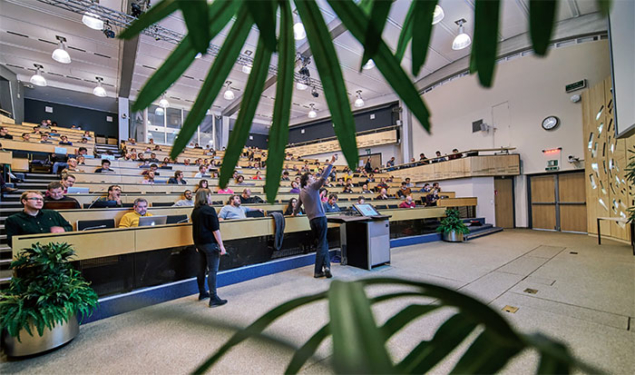
More than 300 physicists from the LHCb Collaboration and the theory community met at CERN on 8–10 November for a workshop devoted to the implications of LHCb measurements, the seventh since the series began. The very accurate results obtained by LHCb in a broad range of topics have made a large impact on the flavour-physics landscape and have implications on classes of extensions of the Standard Model (SM). The discussions also considered the interplay of searches for on-shell production of new particles at ATLAS and CMS. This series of joint workshops allows informal discussions between theorists and LHCb experimentalists, leading to a fruitful, mutual exchange of information.
Four streams were addressed: mixing and CP violation in beauty and charm; semileptonic decays, rare decays and tests of lepton-flavour universality; electroweak physics, heavy-flavour production, implications for PDFs and exotic searches; and QCD spectroscopy and exotic hadrons. Following an experimental overview of each stream, a series of theoretical presentations covered the latest calculations or suggested interesting observables or analysis methods to test new ideas.
Examples of recent results that have attracted a lot of interest include spectroscopy of conventional and exotic hadrons such as four- and five-quark hadrons, which provide new challenges for QCD. Measurements of CP-violating observables in B meson decays are another hot topic, since they can be used to determine the angles of the unitarity triangle and hence probe for manifestations of new physics beyond the SM paradigm. Unfortunately, the data present an overwhelming agreement with the SM, but the majority of these measurements are so far statistically limited, with theoretical uncertainties on the interpretation of the physical observables much smaller than the attainable experimental precision.
A significant part of the workshop was devoted to exciting and intriguing anomalies in the b-quark sector that test lepton-flavour universality (LFU), a cornerstone of the SM. These anomalies can naturally be grouped into two categories according to the underlying quark-level transition: those arising in b → sl+l– flavour-changing neutral-currents at one-loop level when measuring B0 → K*l+l–, or B+ → K+l+l– (with l = e or μ); and those arising in b → c l ν charged-currents at tree level, when measuring B0 → D(*)l ν, or B+c → J/ψ l ν (with l = τ, μ or e). Taken together, these anomalies represent the largest coherent set of possible new-physics effects in the present LHCb data.
Although there are well-motivated models that attempt to explain the effects, it is too early to draw definite conclusions. So far not a single LFU measurement deviates with respect to the SM above the 3σ level. However, what is particularly interesting, is that these anomalies challenge the assumption of LFU, which we have taken for granted for many years. Furthermore, these measurements have been performed so far with Run-1 data only. Updates with Run-2 data are under way and should allow LHCb to rule out the possibility of statistical fluctuations.








